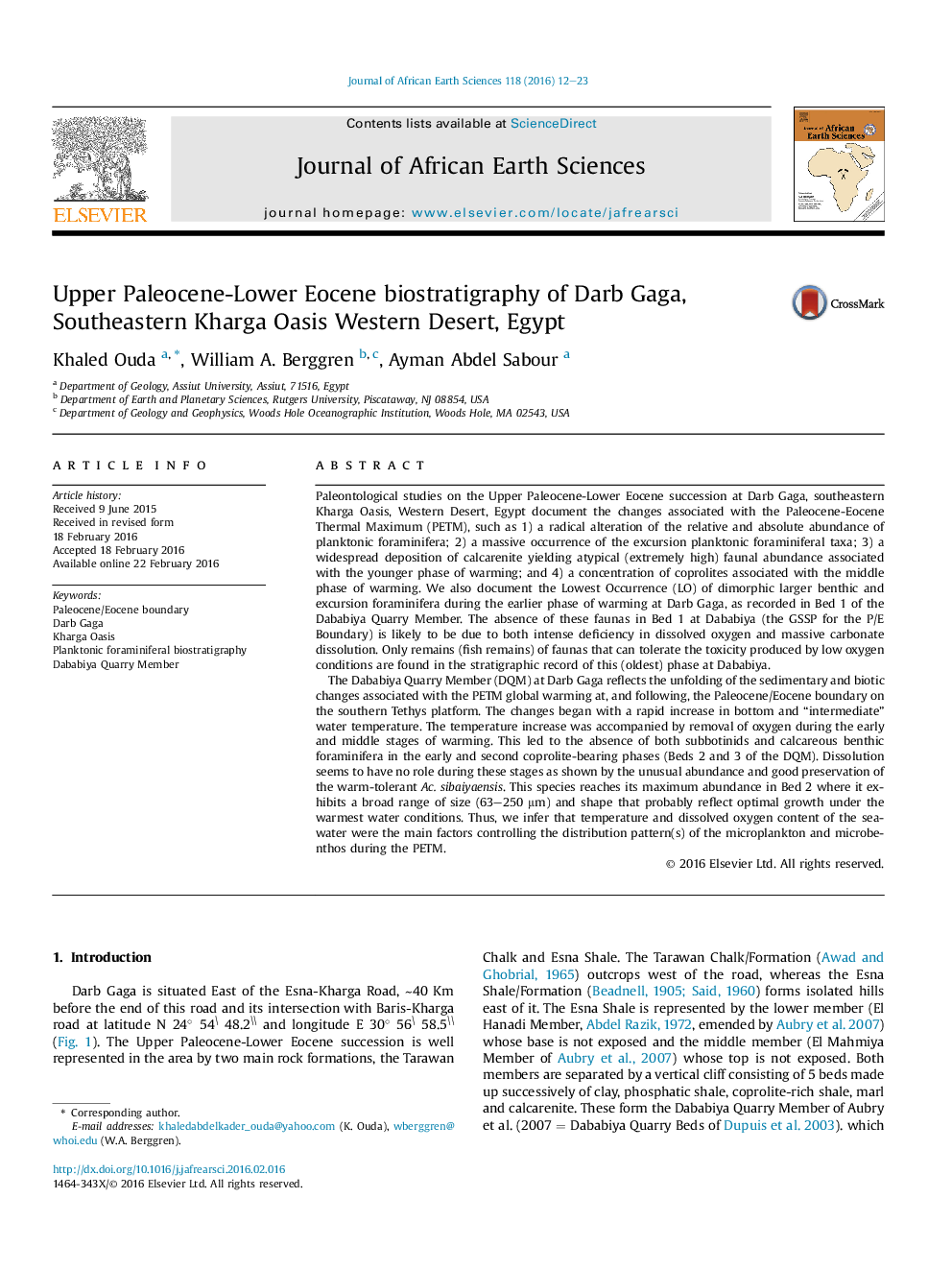| کد مقاله | کد نشریه | سال انتشار | مقاله انگلیسی | نسخه تمام متن |
|---|---|---|---|---|
| 4728421 | 1640190 | 2016 | 12 صفحه PDF | دانلود رایگان |
• The beds of the Dababiya Quarry Member reflect the unfolding of the sedimentary and biotic events associated with the PETM.
• The older phase of the PETM is marked by the total elimination of both mature planktonic and smaller benthic foraminiferal faunas.
• The middle phase of the PETM included a continuous supply of coprolites and deposition of carbonate-bearing, apatite–rich sediments.
• The younger phase of the PETM is characterized by the widespread deposition of calcarenites yielding high faunal abundance.
• All phases are marked by the restricted appearance of excursion planktonic foraminiferal taxa, but in different frequencies.
Paleontological studies on the Upper Paleocene-Lower Eocene succession at Darb Gaga, southeastern Kharga Oasis, Western Desert, Egypt document the changes associated with the Paleocene-Eocene Thermal Maximum (PETM), such as 1) a radical alteration of the relative and absolute abundance of planktonic foraminifera; 2) a massive occurrence of the excursion planktonic foraminiferal taxa; 3) a widespread deposition of calcarenite yielding atypical (extremely high) faunal abundance associated with the younger phase of warming; and 4) a concentration of coprolites associated with the middle phase of warming. We also document the Lowest Occurrence (LO) of dimorphic larger benthic and excursion foraminifera during the earlier phase of warming at Darb Gaga, as recorded in Bed 1 of the Dababiya Quarry Member. The absence of these faunas in Bed 1 at Dababiya (the GSSP for the P/E Boundary) is likely to be due to both intense deficiency in dissolved oxygen and massive carbonate dissolution. Only remains (fish remains) of faunas that can tolerate the toxicity produced by low oxygen conditions are found in the stratigraphic record of this (oldest) phase at Dababiya.The Dababiya Quarry Member (DQM) at Darb Gaga reflects the unfolding of the sedimentary and biotic changes associated with the PETM global warming at, and following, the Paleocene/Eocene boundary on the southern Tethys platform. The changes began with a rapid increase in bottom and “intermediate” water temperature. The temperature increase was accompanied by removal of oxygen during the early and middle stages of warming. This led to the absence of both subbotinids and calcareous benthic foraminifera in the early and second coprolite-bearing phases (Beds 2 and 3 of the DQM). Dissolution seems to have no role during these stages as shown by the unusual abundance and good preservation of the warm-tolerant Ac. sibaiyaensis. This species reaches its maximum abundance in Bed 2 where it exhibits a broad range of size (63–250 μm) and shape that probably reflect optimal growth under the warmest water conditions. Thus, we infer that temperature and dissolved oxygen content of the sea-water were the main factors controlling the distribution pattern(s) of the microplankton and microbenthos during the PETM.
Journal: Journal of African Earth Sciences - Volume 118, June 2016, Pages 12–23
